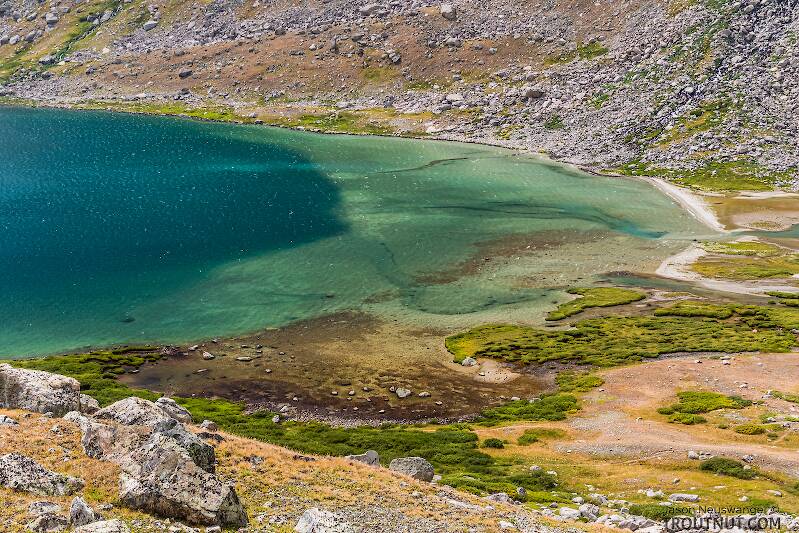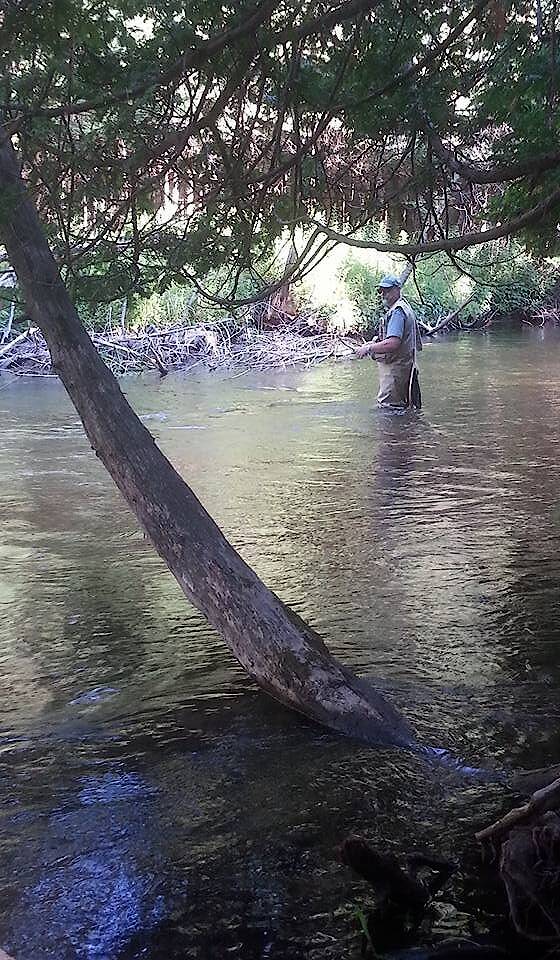
Hex Mayflies
Hexagenia limbata
The famous nocturnal Hex hatch of the Midwest (and a few other lucky locations) stirs to the surface mythically large brown trout that only touch streamers for the rest of the year.
Featured on the forum

This specimen appears to be of the same species as this one collected in the same spot two months earlier. The identification of both is tentative. This one suffered some physical damage before being photographed, too, so the colors aren't totally natural. I was mostly photographing it to test out some new camera setting idea, which worked really well for a couple of closeups.

Troutnut is a project started in 2003 by salmonid ecologist Jason "Troutnut" Neuswanger to help anglers and
fly tyers unabashedly embrace the entomological side of the sport. Learn more about Troutnut or
support the project for an enhanced experience here.
Dillo on Oct 11, 2015October 11th, 2015, 2:14 pm EDT
I am thinking about trying fly tying this winter. I would like to tie basic attractors like wooly buggers, elk caddis, parachute Adams, hares ears, pheasant tails, Prince nymphs, and foam terrestrials. What basic materials will cover most of these patterns? I figured I would need some elk hair, foam, hackle, and dubbing- what kinds are the most versatile?
Dillo on Oct 11, 2015October 11th, 2015, 2:18 pm EDT
Also what kinds of thread work for a wide variety of patterns
Martinlf on Oct 12, 2015October 12th, 2015, 1:46 pm EDT
Yes, elk hair or deer hair, foam, a few hackle capes or saddles, and dubbing will get you started. Collins has good hackle and you can Google to find the farm, call, and the owner will send what you want. Whiting hackle is good generally too. I like rabbit fur dubbing, and there are many brands. Hareline is popular, and I like their dubbings generally, especially their hare's ear. Others will have differing opinions, I'm sure. You'll need some peacock eyes or strung peacock for the prince nymphs. I'm liking Veevus 8/0 or 6/0 threads these days. Unithread is also good in those sizes. I'd recommend poly yarn for the Adams posts. It is easy to work with and floats well. You can try a variety of colors too. I'd tie white, orange or pink for hard to see situations, perhaps some dun and black (sometimes useful in glare). The fish don't seem to care about the color of posts--at least in my experience. With small flies a bright post can be very useful.
"He spread them a yard and a half. 'And every one that got away is this big.'"
--Fred Chappell
--Fred Chappell
Roguerat on Oct 22, 2015October 22nd, 2015, 11:41 am EDT
A little different way to go about building a tying inventory, but starting out I obtained some basic tying books such as Dave Hugh's Essential Flies then purchased the materials for the flies I wanted to start with. Starting with basic flies such as the Adams and so on allowed me to build a tying-material inventory over time as my expertise- and curiosity- increased. Basic materials go a long way since a lot of patterns are similar enough to substitute hackle/dubbing in some cases.
Roguerat
'Less is more...'
Ludwig Mies Vande Rohe
Roguerat
'Less is more...'
Ludwig Mies Vande Rohe
Quick Reply
Related Discussions
Topic
Replies
Last Reply
8
Nov 5, 2020
by Stickstring
by Stickstring



